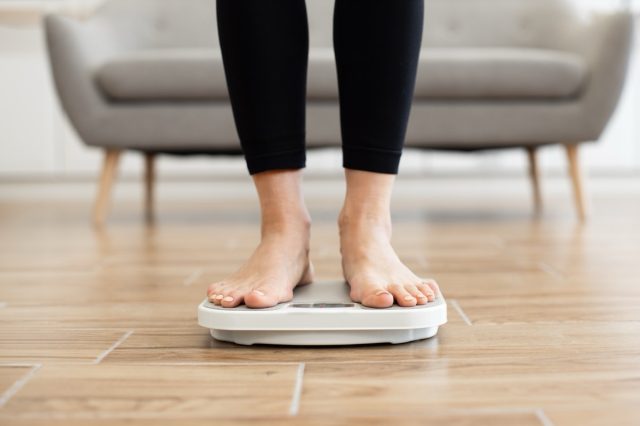5 Belly Fat Mistakes Everyone Makes According to This Doctor

The renewed interest in “The Biggest Loser” reflects a public dialogue about obesity, which has been largely spurred by the approval of the GLP-1 receptor agonist medications for weight loss.
As a physician, I feel that the focus on obesity is long overdue, and the fact that we are now talking about obesity as a serious disease with serious consequences is a good thing.
The good news is that we are talking about it again, and there is a lot to talk about and a lot to learn. Here are the five biggest belly fat mistakes you’re probably making—and what to do instead to finally see lasting results.
What The Biggest Loser Actually Got Right
Although the methods utilized by contestants were problematic, there were two aspects regarding the show’s approach to weight loss that were correct and, from my perspective, helpful.
Significant weight loss IS possible with lifestyle changes. I was trained to be a medical pessimist when it came to weight loss with lifestyle changes, and the early years of my career did nothing to convince me otherwise. I watched even my motivated patients struggle to lose weight, and those who did never kept the weight off.
Although the calorie deficit approach that the show contestants utilized resulted in the very same weight loss and subsequent regain I had seen time and time again, newer research focusing on what (and not how much) people eat has demonstrated that people can lose significant weight and actually keep it off.
You have to match up the types of foods you are eating with what your metabolism can handle. In the Virta Health clinical trial, for example, members lost 13% of their body weight in the first year, without medications, and they kept it off into the second year and beyond.
Weight loss transformations can be inspirational. People were concerned that the show would focus on poking fun at individuals with obesity. However, The Biggest Loser demonstrated that we, as an audience, enjoyed watching people lose weight and change their lives for the better (even if it was only temporary).
It was hard not to get excited seeing the progress week after week. Perhaps we felt good watching others succeed. Perhaps we just wanted to believe that it might be possible for us and for our loved ones as well.
What The Show Got Wrong
Eating less and exercising more does not work for healthy and sustained weight loss. In study after study, patients struggle to lose weight, and they struggle even more to keep it off. This is a failed paradigm.
Here’s why this approach backfires:
- Your body goes into storage mode. If you eat less and exercise more to create a calorie deficit, your body tries to store fat even as you are trying to lose it.
- You become fatigued. If you are exercising to burn calories while restricting calories at the same time, your body conserves energy, making you feel tired and making it even harder to exercise.
- You’re fighting your physiology. If you are trying to lose weight in a manner that causes the body to fight you at every turn, it is no wonder that most people simply give up over time and go back to what they were doing before the diet.
You’re Only Looking at the Scale

Not all fat is the same. The fat stored around our midsections and around our organs tends to be white fat rather than the subcutaneous brown fat, which we store in the more peripheral areas of our body, such as our arms and legs.
Here’s what really matters:
- White fat is more dangerous. The white fat around your midsection is more closely associated with poor health outcomes like cardiovascular disease, diabetes, liver disease, and kidney disease.
- The scale doesn’t tell the whole story. The Biggest Loser focused on total weight loss rather than the type of weight loss and the health implications.
- Body composition matters more than weight. If all you look at is the scale, you are not taking into consideration body composition, nor where the fat was lost, or what type of fat was lost.
In other words, you are not looking at what we really care about: the health and health risk of the individual.
You Think Weight Loss Will Fix Everything

The show implied that obesity was the problem and that fixing the obesity would make everything better. In fact, many of the contestants viewed the possibility of losing weight on the show as the solution to many, if not all, of their problems, from medical issues to relationship difficulties to financial woes.
Contestants and viewers bought into the idea that losing weight by any means would improve their health and more. However, this does not acknowledge the fact that obesity, and the less healthy abdominal obesity and belly fat in particular, are symptoms of underlying issues, including metabolic and emotional ones.
The real problem: When we, as physicians, have focused on treating symptoms rather than the underlying problems (for example, in the setting of chronic pain management), patients have had to pay the price with short-term results and poor outcomes in the long run.
You’re Creating a Calorie Deficit Without Fixing Your Metabolism

In the show, contestants focused on creating a calorie deficit, day after day and week after week. They ate less and exercised more. They lost weight. They won.
However, as the follow-up of these individuals confirmed, the calorie-deficient approach does not work in the long run and does not result in the health improvements people really want.
The root cause you’re missing: You need to look at the root cause of the problem, which is a damaged metabolism (metabolic dysfunction) and insulin resistance.
What’s really happening:
- Obesity is a result of this underlying problem
- Other metabolic diseases go along with it: high blood pressure, cholesterol abnormalities, cardiovascular disease, liver disease, and more
- If you do not change what you are eating and why you are eating that way, you are not addressing the root of the problem
- If you only focus on how much you eat and how much you burn with exercise, any success is likely to be short-lived
Even if you do lose weight, you might not actually be improving your health.
You’re Focused on Numbers Instead of Health

Perhaps this is not at all surprising considering that this was a prime-time television show, but the focus each and every week was on the numbers and on the appearance of the contestants. At the end of each episode, contestants stood on a scale on stage with their bodies and bellies on full display.
Yes, watching the numbers go down and watching the changes in body shapes was captivating. However, the show was missing the point.
The real goal of healthy weight loss is not just to lose weight and look better. The goal is to lose weight in a sustainable and healthy manner and, ultimately, to improve overall health.
This means addressing the root of the problems: metabolic dysfunction and food choices that do not match up with what the body needs. When you do address the underlying problems, people lose fat in the right way and in a much more sustainable way. They lose the right kind of fat, including belly fat and visceral fat. They improve their health.
Perhaps this is too much to expect from a reality television show, but the oversimplification of what success was missed the point from a true health perspective.
You’re Exercising Too Hard

This is a bit tangential, but one final mistake that the show made was with regard to exercise. From day one of each season, contestants were compelled to push themselves to extremes physically.
However, people with obesity are not just athletes with large bellies. They are metabolically broken. Their bodies struggle to use energy effectively, and they store it instead in the form of fat.
Why extreme exercise backfires:
- Pushing contestants so hard with exercise made for exciting episodes • People suffered, passed out, and suffered complications from muscle breakdown • Even beyond safety concerns, what they were doing did not make sense from a physiological standpoint
If all you care about is burning calories, perhaps pushing harder might make sense on the surface. No pain, no gain, right? But this is not what a body with metabolic dysfunction and obesity needs.
What your body actually needs: You need to exercise in a manner that is safe and can be done day after day, and can actually be enjoyed. Ideally, you want to exercise in lower exercise intensity zones (zones 1 and 2), which best allow for the body to burn both carbohydrates and fats for fuel. This encourages the body to heal its broken metabolism.
In other words, sometimes you have to go slower to succeed.
What You Should Do Instead
So you want to lose weight and, in particular, lose your more metabolically dangerous belly and visceral fat. You want to improve your health in addition to losing weight. What can you do to maximize your chances of success?
Focus on improving your health rather than focusing on the scale or your appearance. Remember that the weight is not the root problem. It is a manifestation of underlying issues. If you address the root of the problem, your health will improve, and your weight will follow.
Talk to your doctor about what parameters you really want to be following to gauge your success. This might mean labs or even imaging studies to see if you are losing the right kind of weight in the right places.
Eat foods that match up with what your metabolism needs and can handle. Focus on what you eat rather than how much you eat. Find foods that you actually enjoy that just happen to work for your metabolism. And if you don’t know how to find or identify the right foods for you, get help. There are companies like Virta Health that focus on helping people learn to listen to their bodies in order to get their nutrition right for them.
Exercise intelligently. Choose activities that are safe for you and that you can increase gradually. Focus on lower intensity exercise training zones. These are better for improving metabolic health. The higher intensity training sessions can be saved for prime time television or for when you are feeling healthier and are ready to start thinking about athletic performance. If you are not sure where to start or when to back off, get help from a trainer who understands metabolic dysfunction or from your doctor.
Finally, commit to proving everyone wrong and inspiring others. If you address the root of the metabolic problem, and if you focus on eating the right foods for you (rather than just focusing on how much), and if you exercise intelligently, you can lose weight (and the right kind of weight). You can do this in a manner that is enjoyable and sustainable, and you can improve your health for life!
Looking for easy ways to lose fat? Here’s How Long Your Walking Workout Should Be To Shrink Belly Fat.